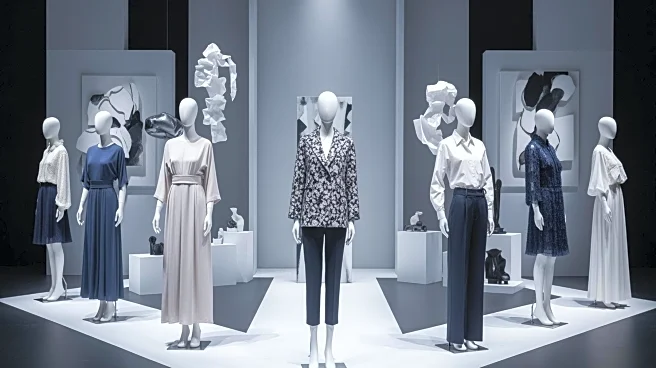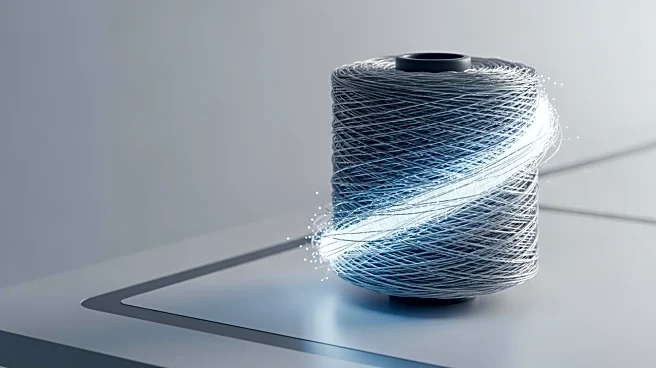What's Happening?
The fashion industry is undergoing a significant transformation with the integration of 3D technology into fabric construction. This development is revolutionizing traditional methods of weaving, knitting,
and embroidery by allowing designers to create fabrics with intricate three-dimensional structures. Techniques such as 3D weaving, knitting, and printing enable the production of fabrics that are self-supporting, lightweight, and adaptable. This innovation not only enhances the aesthetic appeal of garments but also improves their functionality and sustainability. Designers can now produce clothing with customized fit and comfort, innovative textures, and functional features directly integrated into the fabric. The use of 3D technology also supports sustainable fashion practices by enabling on-demand production, reducing material waste, and incorporating recycled and biodegradable materials.
Why It's Important?
The integration of 3D technology in fashion textiles has far-reaching implications for the industry. It offers a sustainable solution to the environmental challenges posed by traditional garment production, which often results in excess waste and overproduction. By enabling on-demand manufacturing, 3D technology reduces fabric waste and the carbon footprint associated with fashion production. Additionally, the ability to create customized garments enhances consumer satisfaction and reduces the likelihood of unsold inventory. This technological advancement also opens new creative possibilities for designers, allowing them to push the boundaries of traditional fashion design and create garments that are both functional and aesthetically pleasing. As the fashion industry continues to embrace these innovations, it is likely to see a shift towards more sustainable and personalized fashion solutions.
What's Next?
As 3D technology becomes more accessible, it is expected to be adopted by a wider range of fashion brands, from luxury houses to sportswear companies. This could lead to increased collaboration between designers and consumers, with the latter playing a more active role in the design process. The integration of smart textiles, which can interact with the environment or the wearer's body, is also likely to become more prevalent. This could result in garments that monitor health metrics, adjust temperature, or change color and texture based on environmental stimuli. The continued development of bio-based fibers compatible with 3D construction methods could further enhance the sustainability of fashion textiles, offering eco-friendly alternatives to traditional materials.
Beyond the Headlines
The fusion of 3D technology with fashion design is not just a trend but a strategic shift towards more sustainable and innovative practices. It represents a convergence of digital precision, engineering, and traditional craftsmanship, paving the way for a new era of creativity in the fashion industry. As these technologies evolve, they are expected to drive mass customization, transforming how garments are produced, marketed, and consumed. This shift could also influence other industries, such as automotive and aerospace, where technical textiles are used. The potential for 3D technology to reduce environmental impact and expand creative horizons makes it a critical area of focus for the future of fashion.











